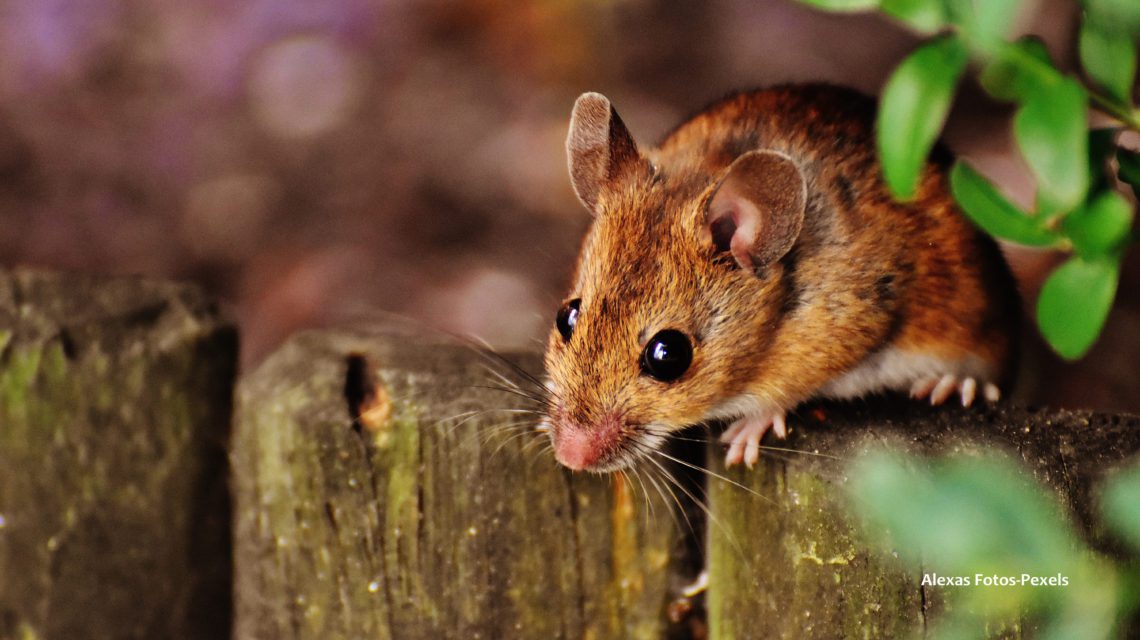Rodents love to invade homes when it’s cold outside because houses are the perfect source of shelter, warmth, and food. Read on to learn about typical rodent behavior, the signs of an infestation, and how to prevent/get rid of rodents.
Skip to a Section:
- Rodent Identification, Behavior, and Lifecycle
- Signs of Rodents in Your Home
- How to Keep Mice Out When Winter Comes
- How to Eliminate Rodent Infestations
Rodent Identification, Behavior, and Lifecycle
Three types of rodents (deer mice, house mice, and Norway rats) are commonly seen in Utah. Each is nocturnal and has a similar diet. While all potentially carry damaging diseases, only deer mice are known to carry the hantavirus, a serious respiratory ailment.
Deer Mouse
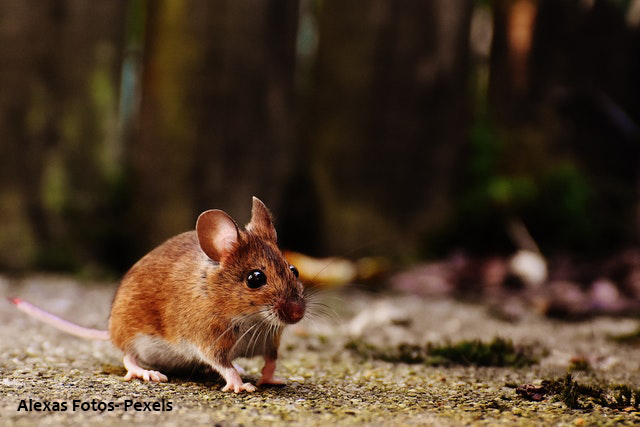

Deer mice are similar to the size of a house mouse, with a white underside (even on the tail) and smaller ears and tails than house mice. They can live up to 8 years, but most only live for about 1-1.5 years. Already mature within 1-2 months after birth, females have 2-4 litters each year, gradually turning a small infestation into a large one.
Like all rodents, they are nocturnal and eat plants, fungi, bugs, decaying flesh, etc. They live almost everywhere in North America and have adapted to a variety of climates. In Utah, they prefer to live outdoors, so you probably won’t encounter this type of mouse in your home, but you may see them in your garage, shed, or barn.
Deer mice carry the hantavirus respiratory disease, a deadly illness with only a 62 percent survival rate. The disease is usually transmitted when people accidentally inhale infected fecal matter. If you suspect a deer mouse infestation, make sure you wear proper face protection while cleaning affected areas.
House Mouse
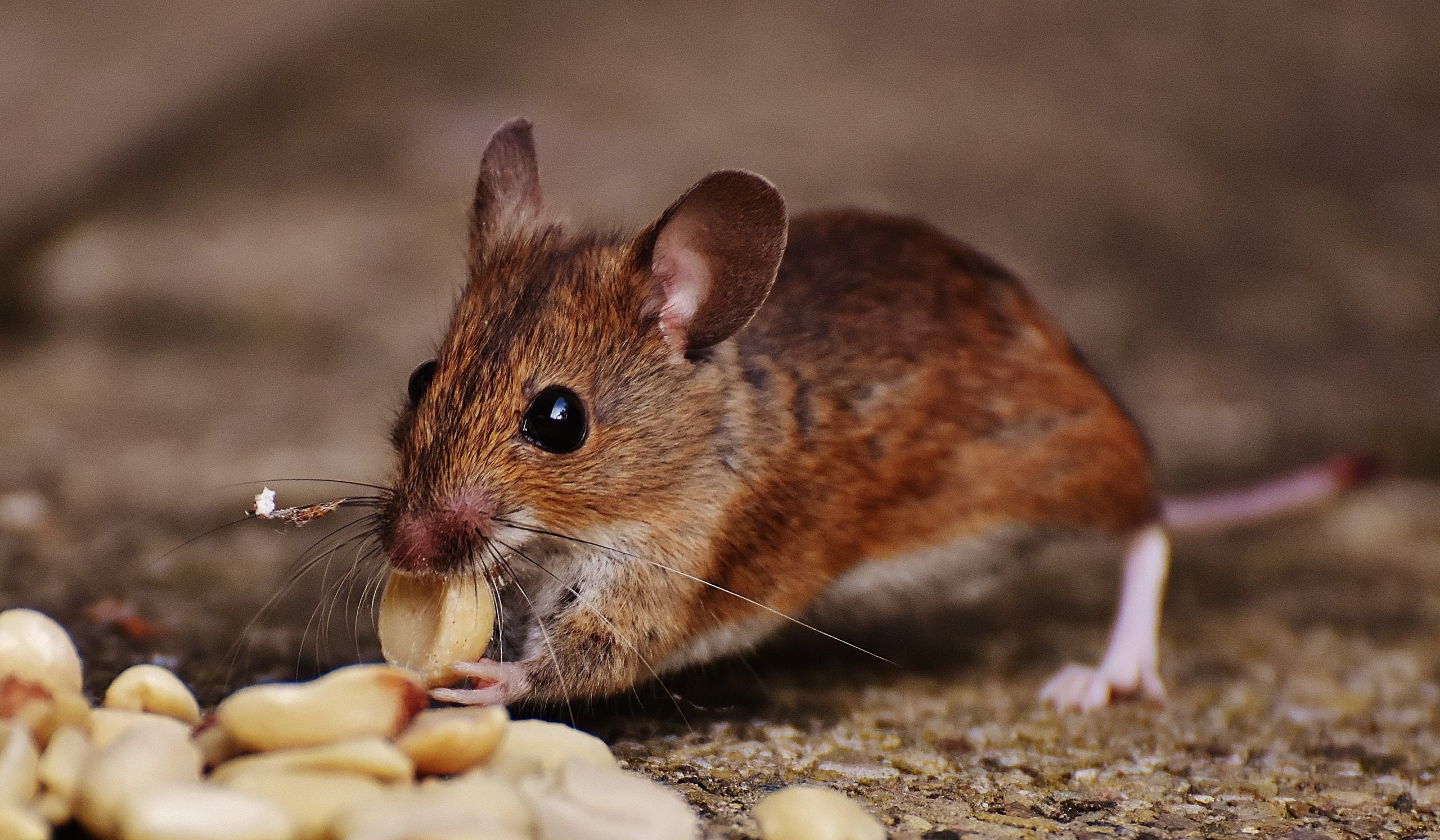

House mice have large ears, pointed muzzles, slender bodies, and tails as long as their bodies (about 2.5– 4.5 inches long). Their feces are about 1/8-1/4 inches long and shaped like a football. Mature females can give birth to 8 litters (with 6 mice per litter) every year. This makes infestations very difficult to control.
As the most common rodent found in Utah homes, house mice have adapted well to life alongside humans. In the wild, they eat seeds, grains, and insects. When they come indoors, they will eat almost anything and can cause extensive damage to food stores.
Norway Rat
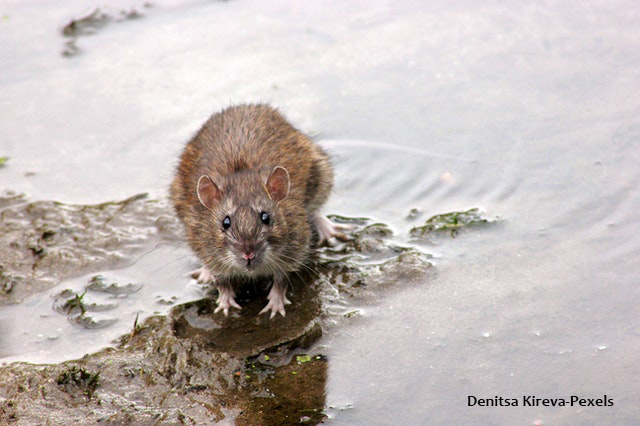

Norway rats are larger than mice and have blunt noses, long tails, and coarse, gray-white fur on the belly that’s darker on top. You can also identify them by the size and shape of their feces, which are usually capsule-shaped and about ¾ inch long.
They sometimes come inside homes, but they most often live in urban areas and scavenge for discarded food in trash bins.
Signs of Rodents in Your Home
For homeowners, few things are as frustrating as a rodent infestation. Mice and rat populations are incredibly resilient and have a knack for getting into secure places. The real problem with rodent infestations is that you might not even realize you have one. Usually, by the time you see one of the rodents, their population has significantly increased in your home. Here are some signs of rodents you can check for before it is too late:
- Droppings
- Chew-marks
- Nests
Droppings
The first tell-tale sign that rodents are infesting your home is their droppings. Rodent droppings are small and dark. If they are recent, they will be fairly moist, but if they’ve been there for a while, they will be dried up. You are likely to find rodent droppings in tucked-away, out-of-sight areas, such as pantries or food cupboards. You may also find droppings and urine stains along baseboards, which is where they like to travel.
Chew-marks
One of the primary ways mice and rats will damage your home is by chewing on everything. With their powerful jaws and ever-growing teeth, mice can chew through a surprising number of materials, including wood, plastics, brick, aluminum, etc. They often chew into cardboard/plastic food containers, on sections of your wall, and on cables that are out in the open.
Nests
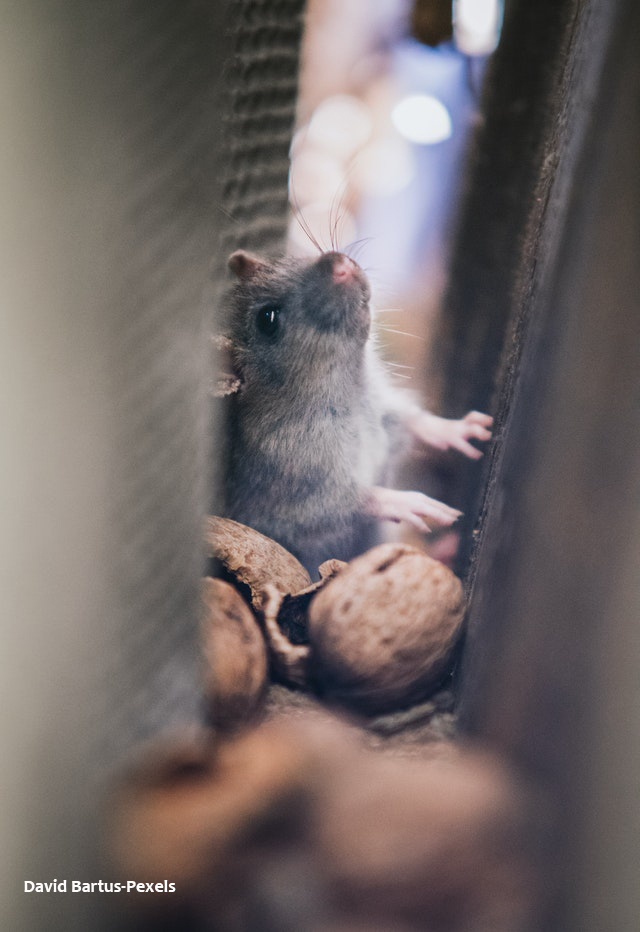

Both mice and rats need a place to take shelter. Just like other small animals, they do this by creating nests. Rodents usually like to build nests in walls, under cupboards, or in basements—wherever they can find a dark, hidden spot. They don’t like to be disturbed, so their nest will likely be somewhere with very little (if any) foot traffic. Rodents are also likely to take up residence in your garage, where there are plenty of great areas for them to hide.
It’s unlikely you’ll stumble upon a nest, but if you do, you’ll know. Nests are usually a collection of torn-up cloth, wood shavings, insulation, and other soft, warm materials. If you find something you think might be a nest, you can confirm that possibility by looking for droppings around the area.
How to Keep Mice Out When Winter Comes
Rodents (like other small creatures) look for ways to get out of the cold during the winter months, making homes a prime target. Here are a few tips for keeping mice out of your house before winter comes:
- Make sure your garage or cellar is sealed
- Look for breaches around your home
- Don’t leave scraps of food out
- Keep your home tidy and clean
Make sure your garage or cellar is sealed
The number one way that rodents usually find their way into a home is by sneaking into a garage or a cellar. This usually happens because even though people make sure their homes are weather-sealed, garages usually have plenty of openings where mice can work their way in. After that, they wait patiently to invade the rest of the house.
To prevent rodents from entering through your garage, make sure you weather seal it before cold temperatures come. Weather seals will help keep rodents out and will also insulate your garage better.
Look for breaches around your home
Aside from your garage, look around your home for spots where rodents can easily slip inside. Sometimes, even slight cracks in the foundation make it possible for small mice to slip in. Look around for breaches, and seal them up before your warm home becomes too enticing.
Don’t leave scraps of food out
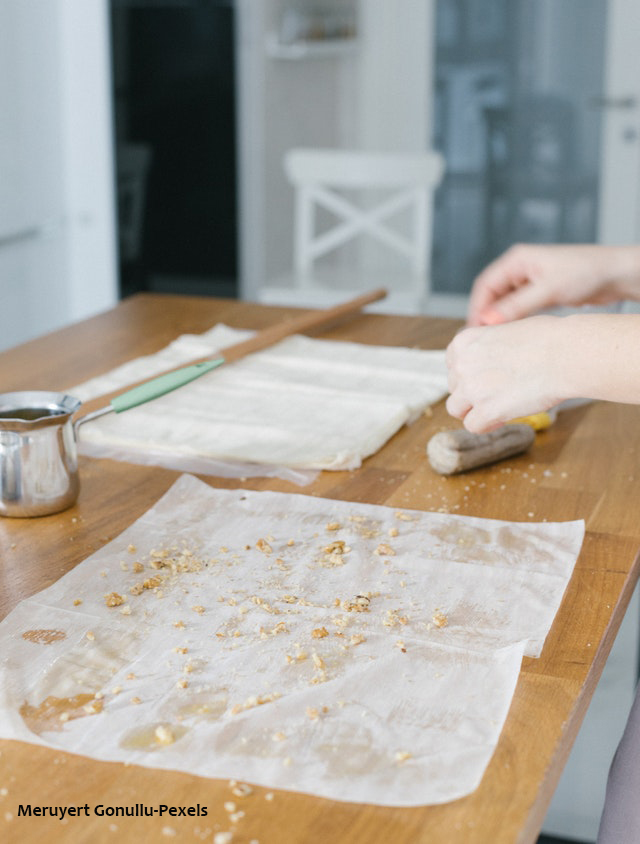
Although the warmth of your home is already going to be enough of a reason for mice to want to enter, giving them another reason is going to make it twice as likely that they try. Leaving scraps of food on your floor or neglecting to sweep up crumbs for an extended period of time is an open invitation for rodents to invade. Be sure to cover or put food away promptly after eating and to tidy up your dining area frequently.
Keep your home tidy and clean
Rodents like places where they can hide and create nests, and dirty, cluttered homes are prime spots. Make your home less appealing to rodents by keeping it clean and free of clutter—the fewer places there are to hide, the better! This goes for your garage too—keep it clean to keep rodents out.
How to Eliminate Rodent Infestations
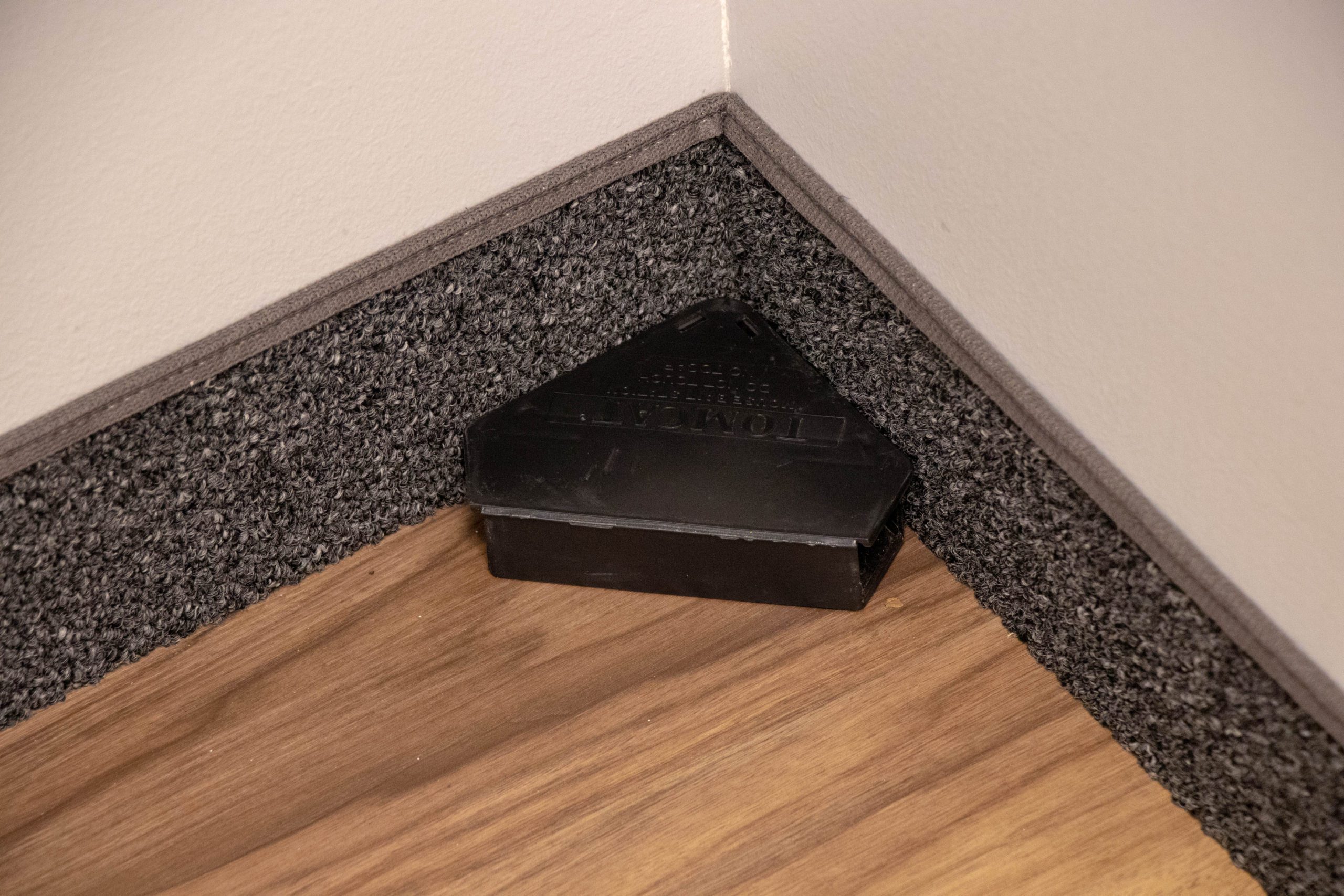

The best way to get rid of rodents is to set traps for them. A variety of traps exist, so it can be helpful to hire a professional company to take care of the problem. Stewart’s pest control program can easily get rid of the rodents in your home. Call or text our office at 801-226-2261 for a free quote today!



